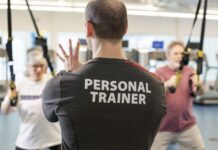Introduction
Learning in the classroom is often more structured than learning in the real world. Students are given instructions and expected to complete the task at hand at the school. In the real world, employees are often given instructions but are also likely to think for themselves and develop creative solutions. In the classroom, students are usually graded on their performance. Employees are typically graded on their performance and innovation, and creativity in the real world. This means that learning in the real world often requires more independent thinking and problem-solving than learning in the classroom.
- Follow a Set Schedule
Learning in the classroom is often more scheduled and planned than learning in real life. Students have a set time for each class and are given assignments with due dates in the classroom. Employees often have more flexible schedules and may not always have deadlines for their work. This means that learning in the real world requires more time management and self-discipline than learning in the classroom.
2. Learn from a Single Source
In the classroom, students typically learn from a single source – their teacher. Employees often have to learn from multiple sources, including books, articles, websites, and other people in the real world. This means that learning in the real world often requires more research and resourcefulness than learning in the classroom.
3. Be Assessed on Your Work
It is important to assess your work to gauge your progress and identify improvement areas. Furthermore, being assessed on your work can motivate you to continue working hard and improve your performance. Employers often use assessments to measure an employee’s productivity and skills, and you can use this information to make decisions about raises, promotions, and other job opportunities. Additionally, assessments can help you understand your strengths and weaknesses and identify things you need to work on. Ultimately, being assessed on your work is an important part of any job, and it can help you gauge your progress, improve your performance, and further your career.
4. Work Independently
Working independently can be a great way to get things done. When you are in charge of your work, you can set your own pace and priorities. This can help you to be more productive and efficient. Additionally, working independently can help you to develop new skills and knowledge. When you are not relying on others for help, you are forced to figure things out alone. This can help you to become more resourceful and innovative. Finally, working independently can give you a sense of satisfaction and achievement. When you complete a task on your own, you can feel proud of your accomplishment. So if you are looking for a way to boost your productivity and increase your knowledge, consider working independently.
5. Focus on Issues in the Community
In many ways, learning in the classroom is different from learning in the real world. There are fewer distractions, and the material is presented in a linear fashion that is easy to follow. The real world is often chaotic and unpredictable. Information is often difficult to find.
Additionally, real-world learning often happens through trial and error, while mistakes are often not tolerated in the classroom. As a result, learning in school can differ from learning in the real world. However, both types of learning are valuable, and it is essential to learn how to transfer knowledge from one setting to the other.
6. Customize Learning
It is more important than ever to tailor your learning to your specific goals in today’s competitive job market. Whether you are looking to learn a new skill or deepen your knowledge in a particular area, customizing your education can give you the edge to succeed. Fortunately, there are several ways to customize your learning experience. Another way to customize your learning is to take advantage of online resources and distance learning opportunities. Using these methods, you can ensure that your education is tailored to your specific needs and interests.
7. Integrate an Authentic Learning Experience
Students typically learn through lectures, textbooks, and assignments in the classroom. In the real world, employees often have to learn through experience. This means that learning in the real world often requires more trial and error than learning in the classroom. Consider integrating actual learning experiences (such as visiting a local museum or going on an expedition) into your curriculum, allowing kids to engage with relevant real-world ideas directly. This is an essential aspect of experiential learning, and it’s how youngsters connect to real-life topics that are personally significant and impactful.
8. Offering Self-Directed Learning Opportunities
In this day and age, learners are looking for more than just traditional educational opportunities. They want to be able to direct their learning, and they want experiences that are relevant to their interests and goals. This can be done in several ways, including offering online courses, accessing research materials, and allowing students to design their own learning experiences. You may guarantee that your school meets all learners’ needs by providing self-directed learning possibilities.
9. Engage in Project-Based Learning
Project-based learning is an instructional approach focused on real-world, authentic tasks. Students work together to complete a project from start to finish, using multiple skills and knowledge areas. Project-based learning has improved student engagement, motivation, and academic achievement. In addition, it helps students develop critical 21st-century skills such as collaboration, communication, and critical thinking. If you are looking for a way to spice up your curriculum and engage your students, consider incorporating project-based learning into your lesson plans.
10. Participate in Problem-Based Learning
Problem-based learning (PBL) is a student-centered approach to education that actively encourages students to participate in their learning. Unlike traditional educational models, PBL does not focus on lecturing or memorisation. Instead, it challenges students to solve real-world problems using the knowledge and skills they have acquired. This type of learning is more effective than traditional methods, as it helps students better retain information and develop problem-solving skills. In addition, PBL provides an opportunity for students to collaborate with their peers and learn from each other. If you are looking for an engaging and interactive way to learn, problem-based learning may be the right fit for you.
Conclusion
Overall, learning in the classroom is often more structured and less flexible than learning in the real world. This may benefit children who require a more structured learning setting but limit students who need the freedom to explore and experiment. Each learner will need to find the learning environment that works best for them. #KhabarLive #hydnews
(About the Author: K C Raj is a socialist in thinking and believes in the “One Nation, One World” theory. He is a career counselor and recruiter with many years of experience, interested in topics like human development, education, immigration, inequality, and many other international issues.)







